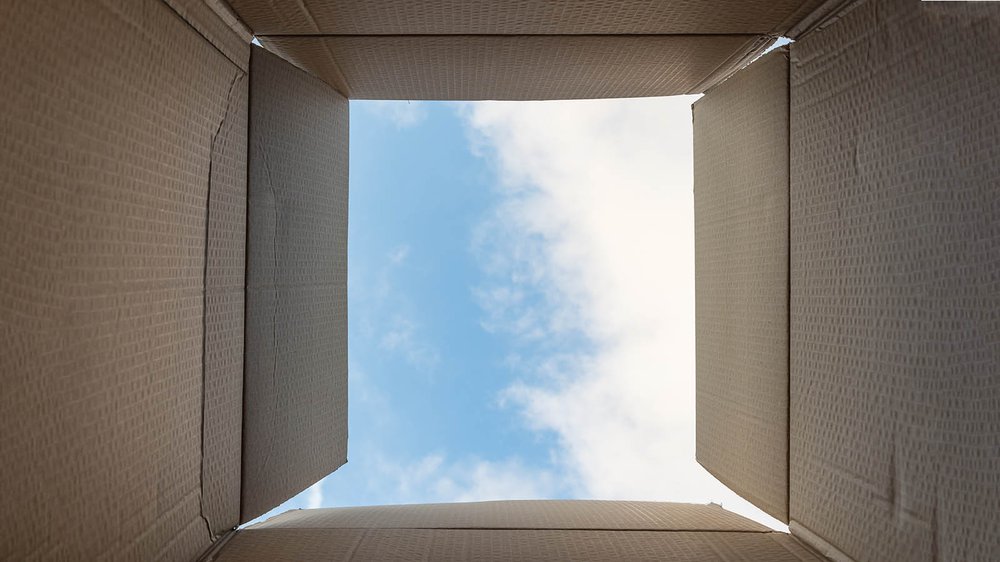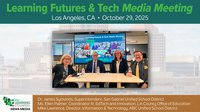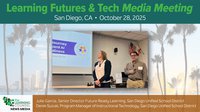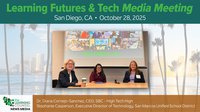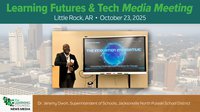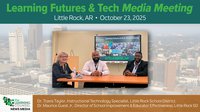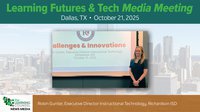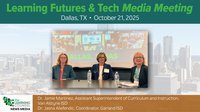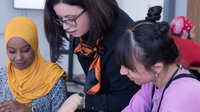“Woke up this morning with a wine glass in my hand
Whose wine, what wine, where the hell did I dine?
Must have been a dream I don't believe where I have been
Come on, let's do it again.”
--Peter Frampton
I was speaking to my friend Sal Gerardo this past week. For those of you who follow my columns, you have probably heard his name before. Sal’s company, Value Spring Technology, is working on an AI solution for education. In Sal’s world, AI in education takes on an entirely different meaning than it might for you and me. It’s not your typical decision-tree logic or chat box tech. In Sal’s world, AI with the proper knowledge library can engage learners with real Socratic teaching, and the machine doesn’t use preprogrammed responses; it can think and learn and have real conversations. When I mentioned the need for out of the box thinking to Sal, he paused and then disagreed. “We don’t need out of the box thinking,” he said. “We just need to throw away the box.”
What Sal was telling me was we need to rethink the premise. Instead of each of us peeking out of the box from time to time, we need to eliminate the box. Why? Because the box represents the way we’ve always done it. If that is our starting point, we may never get to where we need to be. Instead, we need a new starting point.
There is no box.
Before the Coronavirus pandemic, in our education box we spent nearly 3/4 of a Trillion dollars per year to educate some 50 million school-aged learners using an education system that had not changed much since Ulysses S. Grant was president. With all that money, and with so many of our nation’s best and brightest minds involved, the best we could manage is four out of five children graduating our system. And of those children who do graduate, more than 2/3 are lacking in literacy skills and perform poorly in mathematics.
The problem with out of the box thinking is, when it’s done, we always climb back in.
In education, the COVID-19 pandemic has really rocked our world. It has forced us to make drastic changes. It has upset our timeline for instruction. It has exposed us to physical harm, and generally scared the hell out of those of us who are at high risk because of age and pre-existing health conditions. And it has forced us to question everything. For the first time in a long time, we are reordering our priorities and placing the learner ahead of everything else. Everything is on the table now and our old book of rules may no longer apply. We are asking questions now that, perhaps, we should have been asking all along. Big picture questions like, what is the purpose of an education? What do we need to accomplish? Is a physical school even necessary? What is the role of our teachers? What is the role of technology? And, what are we willing to sacrifice to educate our children in the same way we always have?
Before COVID, life was infinitely more comfortable. School was sacrosanct. It had clearly defined rules. Comfortable rules. Comfortable because it fit our understanding of what school was, and why it was necessary. Just like when we went to school. And when our parents went to school. And their parents. In our comfortably boxed view of the world, a child goes to school Monday through Friday for 13 years. Each year, a new grade begins. Teachers are the keepers of the knowledge and dole it out as necessary. Students are told what they will learn and when. School is the central authority. Each grade level is divided into classrooms. Each classroom has a teacher. Schools are located for geographical convenience. Each school is run by a principal. Schools are grouped by geographic region into a district, which is managed by a superintendent. The district is governed by a school board. Et cetera, et cetera.
With COVID, however, nothing is preordained. So, let’s ask our questions again.
What is the purpose of an education? What is our primary goal? What are our secondary goals?
What steps do we need to take to realize the purpose of education?
Is school necessary? Does school need to be a physical place? How does school help us reach our primary and secondary goals and realize our purpose?
What is the role of a teacher? What should it be?
What is the role of technology? Without the construct of the box and everything that goes with it, how could technology be used to accomplish our newly minted purpose of education?
What is the cost of rethinking education? Is the institution of education ultimately more important than the individual learner?
The wonderful thing about education as we have always known it is that it is just so damn comforting. Education is something we can count on. It is part of our way of life. It is what families do. What our kids do. We have schools and teachers and principals and superintendents and school boards. We have rules that we follow, and there is something very reassuring about handing off our kids to the institution of education, in believing that this massive, all knowing system has our children’s best interests in mind. We can tell our children to follow the rules and for 13 years, as long as they go to school and do their homework, they will be on-track to graduate and have a career, a family and children. And then we’ll have grandchildren!
BZZZZZZZZZZZZZZZZZZZZZZZZZZZZZZZZZZZ
Wake up Charles. You were dreaming. Yes Charles, there is still a pandemic.
Damn!
Oh Mom, I don’t want to go to school today.
But you have to Charles, you are the teacher.
About the author

Charles Sosnik is an education journalist and editor and serves as Editor in Chief at the Learning Counsel. An EP3 Education Fellow, he uses his deep roots in the education community to add context to the education narrative. Charles is a frequent writer and columnist for some of the most influential media in education, including the Learning Counsel, EdNews Daily, EdTech Digest and edCircuit. Unabashedly Southern, Charles likes to say he is an editor by trade and Southern by the Grace of God.

